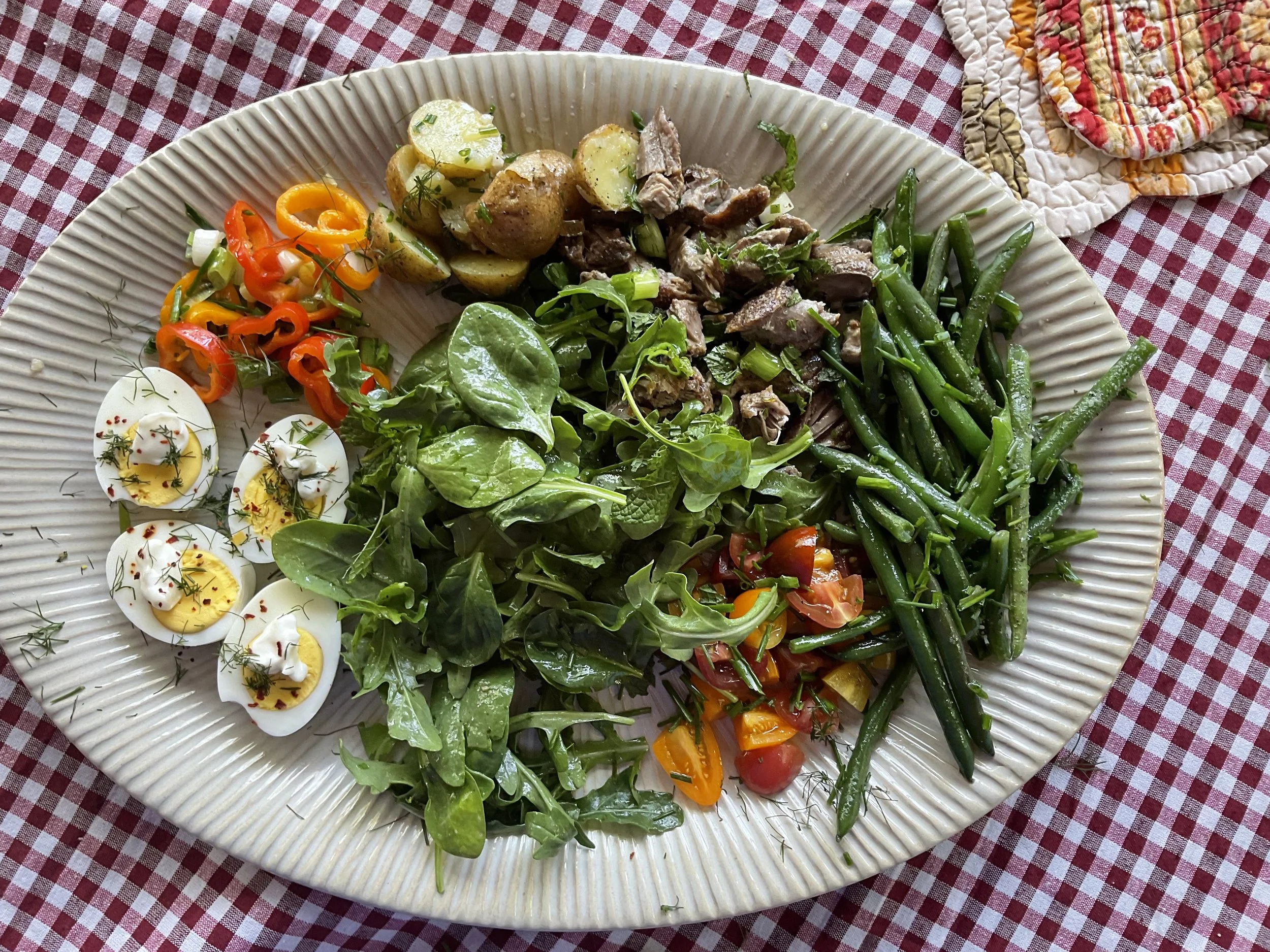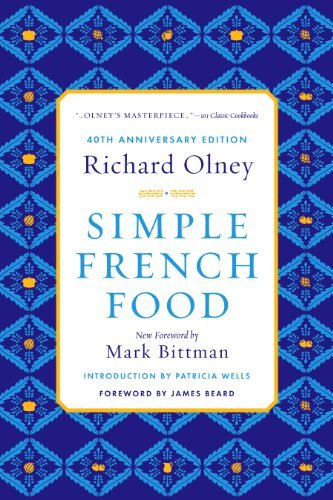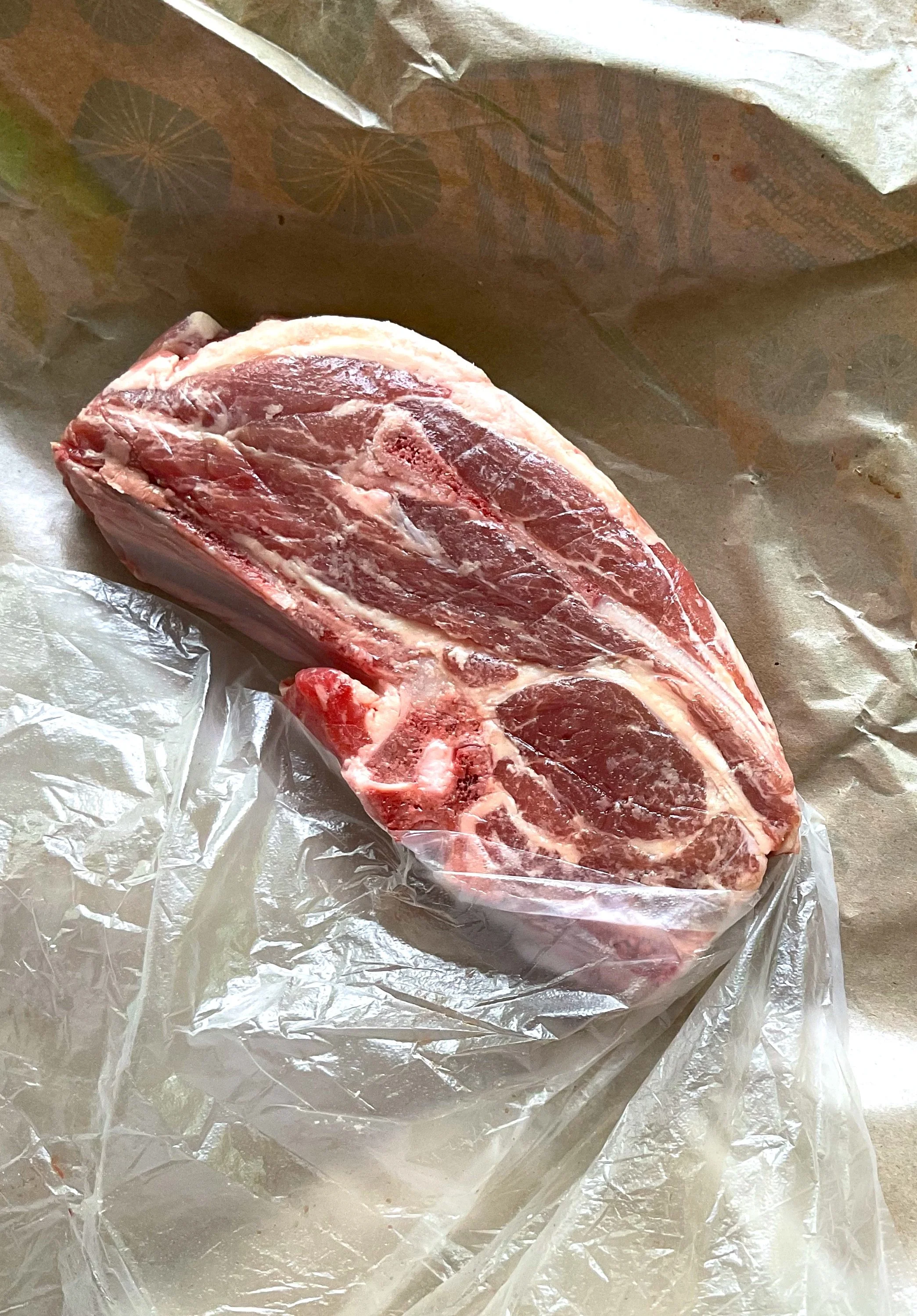Easy Bastille Day Menu—With a Little Help from Your Friends and Richard Olney
Plan ahead for Bastille Day 2024! Consider making a Salade Canaille (a French salad platter), inspired by Iowa-born French-food cookbook author Richard Olney, who lived for most of his adult life in an obscure village in Provence, where he painted, gardened, cooked, entertained, and (luckily for us) wrote inspiring cookbooks.
This is a Salade Canaille (French Salad Platter) for two. Get more food and a bigger platter and make it for four, six, more more. For a large gathering, like Bastille Day, ask friends to bring components of the salad. Put ‘em all together just seconds before serving.
“To serve Olney’s Salade Canaille as part of a beautiful summer menu: Kick off with a simple appetizer of crackers topped with butter and prosciutto alongside some olives. Move on to the Salade Canaille. Finish with some beautiful French cheeses served alongside drippingly ripe fresh, in-season fruit. ”
Lately, I’ve been rekindling my appreciation for Richard Olney (1927-1999), one of 20th century’s best authors of cookbooks on the subject of French food for the American table. While he may not have the name recognition of M.F.K. Fisher, Julia Child, and James Beard, he was equally influential when it came to making French food accessible to everyone.
Another day, I’ll write about his much-admired book, Simple French Food—a book I personally use more for inspiration, concepts, and the highly opinionated writing than for the precise recipes themselves. Incidentally, he would probably be just fine with that, as he did not love the strict and overly exacting recipe writing of his contemporaries, e.g., Julia Child.
Salade Canaille is adapted from Richard Olney’s Simple French Food.
In fact, Olney encourages us to delight in the “gratification of having been able, thanks to mere imagination, to formulate a few odds and ends into a bright, coherent, and often exciting statement.”
That’s exactly what he does with his marvelous Salade Canaille, which literally means “Scoundrel Salad,” but is actually something quite civilized: It’s a French salad platter of beautiful things you’ve found from your garden, farmers’ market, and your best butcher shop or seafood purveyor.
When we think “French Salad Platter,” we often think of Salade Niçoise, served platter-style — and that’s the idea, except that you can do anything you want in terms of the meats and veggies and starch.
The head-note for Olney’s Salade Canaille (Impromptu Composed Salad) runs some 10 paragraphs. He describes how the components of the salad work to form a coherent whole; for instance, how the “potatoes attenuate some of the stronger flavors and, at the same time, lend body and a unifying effect,” and the lettuce “acts as a buffer for the bitterness of the rocket [arugula],” and the hard-boiled egg’s “gentle presence is always welcome among sharply flavored green things.” The vegetables, “each distinctly different in texture and flavor, complement one another.”
Richard Olney, from the cover of his memoir, Reflexions, which was in the final stages of editing when he died in 1999. Olney-geeks (like me) will enjoy his book.
And of course, he encourages you to improvise, improvise, improvise. His salad calls for pot-au-feu meat (essentially, beef pot roast meat), but, he says, you can replace that with tuna, mussels, squid braised in tomato and white wine, or shrimp, or crab. You can replace the potatoes with macaroni or rice or white beans. “One could go on forever,” he writes, “and in practice one does.”
This is by no means Olney’s actual “Salade Canaille” recipe; however, it is heavily inspired by the concept. It also follows his lead that the recipe is merely “an example, and that neither proportions nor specific ingredients need be strictly respected.”
In fact, I’ve given no proportions. Simply make enough of every component for as many people who will be coming to your table.
I braised lamb shoulder steaks for my salad. One 8-ounce shoulder steak can serve two people when it’s part of such a large salad.
Incidentally: If you’re making this for a lot of people on Bastille Day, I suggest you make this salad “potluck style”—that is, have everyone else bring one or two of the components. Nicole brings the hard-boiled eggs and some fresh herbs from her balcony garden; Trevor brings arugula and tomatoes he snagged from the truck farmer parked once a week in a nearby church parking lot; your sister boils some potatoes and French green beans. You make the vinaigrette and the lamb (or beef, or grilled chicken, or roasted chick peas, or salmon or pork tenderloin, or grilled flank steak, or ….). You get the idea.
A final bit of inspiration from Olney himself:
““This salad, in the seasonal round of my own life, symbolizes the happiest time of the year—that which is lived almost entirely out of doors with the table set daily on the terrace in the shade of the grape arbor, the sparkling play of light heightening the effect of the table display of variegated greens and bright-colored punctuations.””
Salade Canaille // French Salad Platter with Lamb (Or Beef, Or Salmon, Or Chick Peas, Or …)
In Richard Olney’s published version of Salade Canaille, he used beef pot roast. I made my French salad platter with braised lamb shoulder. If you love lamb, you can make it with any cut—chops, sliced leg of lamb, even lamb burgers. If you don’t love lamb, make the platter with any other protein you and your guests will love. Flank steak. Pork roast. Chick peas. Salmon. Any kind of good burger. Grilled chicken. You get it!
Salade Canaille. French Salad Platter.
Ingredients for a Salade Canaille:
Vinaigrette — Use your favorite or mine. Make enough to toss everything separately.
Sliced braised lamb (shanks or shoulder arm chops), grilled lamb chops, sliced
roasted leg of lamb, or lamb burgers (or something else, like grilled flank steak or salmon,
etc.)
Small round red or yellow potatoes, boiled whole, sliced in halves or quarters and, while
still warm, tossed gently with enough white wine to moisten
Green beans (French haricots-verts, if you can find them), steamed to desired tenderness,
drained, and pat dry.
Sliced tomatoes, the best you can find
Crudités — raw vegetables that are at their freshest, in-season best, such as onions, sweet
peppers, celery hearts, radishes, cucumbers, etc., cut into pleasant bite-size pieces
Arugula
Tender lettuces (Boston, baby romaine, leaf lettuce) or baby spinach
Fresh herbs — a good quantity (but not a great variety). See note.
Hard-cooked eggs, dolloped mayo spiked with a little mustard and sprinkled with
Piment d’Espelette, Aleppo pepper, or paprika
1. Make vinaigrette. Go easy on the salt, as you’ll salt it all later.
2. When ready to serve, drain the potatoes. Use a large bowl to toss the potatoes with a little of the dressing until lightly coated; season with salt and pepper. Arrange on a large platter. Working quickly, continue tossing each ingredient (except the eggs and the meat) separately with a little of the vinaigrette until the ingredient is lightly coated, then seasoning with salt and pepper. Arrange each ingredient on the platter. Toss the arugula and lettuces with the herbs at the very last, as they can wilt quickly (be sure to season). Arrange the meat and eggs on the platter. Sprinkle everything with a few more herbs. Serve immediately.
* * Choose the herbs carefully. Olney advises, “Too many herbs will confuse the palate.” I used a good amount of dill and chives for my salad, as that’s what I had on hand. Mint and tarragon would also be a great combo for the lamb. Simply choose an herb or two that goes well with your main protein; e.g., thyme and rosemary with chick peas; dill, parsley and basil with salmon; sage or basil with chives for steak. Use them generously (except sage — a little can go a long way)
Find my incredibly easy braised lamb shoulder chops recipe here.
Did you enjoy this post? I hope so! If so, here are some ways to support this site:
• Sign up for my All Things French monthly e-newsletter.
• Order something through Amazon (here’s how it helps me).
• Consider purchasing my book, “Everyday French Cooking: Modern French Cuisine Made Simple” for more easy, everyday French recipes.
Thank you for your consideration!






